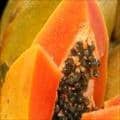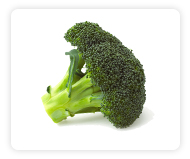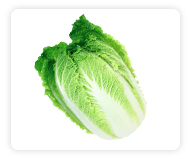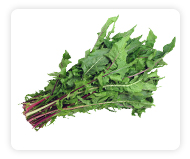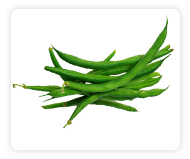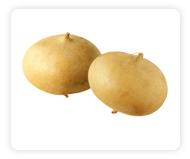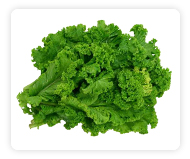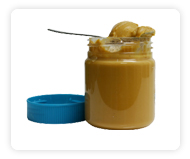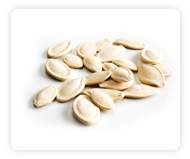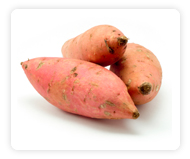Papaya (Carica papaya) aka:lechoza, mamão, penpe, papol, fruta bomba, and pawpaw (though not to be confused with the american pawpaw) is a fibrous orange fruit with a green to yellow leather-like skin, and a center full of fibers and little black seeds.
Health Benefits of Papaya: - Increased Protection from Bacterial and Viral Infections
- Increased Immune Function
- Reduced Cancer Risk
- Protection Against Heart Disease
- Slowing Aging
- DNA Repair and Protection
- Alleviation of Cardiovascular Disease
- Alleviation of Hypertension (High Blood Pressure)
- Alzheimer's Protection
- Osteoporosis Protection
- Stroke Prevention
Papaya contains papain which is a pain killer and known to aid in digestion. Papaya is often used to treat stomach ache.
*Some of these health benefits are due to the nutrients highly concentrated in Papaya, and may not necessarily be related to Papaya.
Natural vitmains, minerals, and nutrients found in Papaya: Vitamin A | Vitamin B9 (Folate, Folic Acid) | Vitamin C | Dietary Fiber | Potassium |
Click here to compare these nutrition facts with other fruits.
| Nutrition Facts |
| Papayas Raw |
| Serving Size 100g |
| Calories 39 |
| % Daily Value* |
| Total Fat 0.14g | 0% |
| Saturated Fat 0.043g | 0% |
| Cholesterol 0mg | 0% |
| Sodium 3mg | 0% |
| Total Carbohydrate 9.81g | 3% |
| Dietary Fiber 1.8g | 7% |
| Sugar 5.9g | ~ |
| Protein 0.61g | ~ |
| Vitamin A | 22% | • | Vitamin C | 103% |
| Calcium | 2% | • | Iron | 1% |
| *Percent Daily Values are based on a 2,000 calorie diet. Your daily values may be higher or lower depending on your calorie needs. |
|
| Vitamins | %DV |
| Vitamin A 1094IU | 22% |
| Retinol equivalents 55μg | ~ |
| Retinol 0μg | ~ |
| Alpha-carotene 0μg | ~ |
| Beta-carotene 276μg | ~ |
| Beta-cryptoxanthin 761μg | ~ |
| Vitamin C 61.8mg | 103% |
| Vitamin E 0.73mg | 2% |
| Vitamin K 2.6μg | 3% |
| Vitamin B12 0μg | 0% |
| Thiamin 0.027mg | 2% |
| Riboflavin 0.032mg | 2% |
| Niacin 0.338mg | 2% |
| Pantothenic acid 0.218mg | 2% |
| Vitamin B6 0.019mg | 1% |
| Folate 38μg | 10% |
| Folic Acid 0μg | ~ |
| Food Folate 38μg | ~ |
| Dietary Folate Equivalents 38μg | ~ |
| Choline 6.1mg | ~ |
| Lycopene 0μg | ~ |
| Lutein+zeazanthin 75μg | ~ |
|
| Minerals | %DV |
| Calcium 24mg | 2% |
| Iron 0.1mg | 1% |
| Magnesium 10mg | 3% |
| Phosphorus 5mg | 1% |
| Sodium 3mg | 0% |
| Potassium 257mg | 7% |
| Zinc 0.07mg | 0% |
| Copper 0.016mg | 1% |
| Manganese 0.011mg | 1% |
| Selenium 0.6μg | 1% |
| Water 88.83g | ~ |
| Ash 0.61g | ~ |
| Useful Stats |
Percent of Daily Calorie Target
(2000 calories) | 1.95% |
| Percent Water Composition | 88.83% |
| Protein to Carb Ratio (g/g) | 0.06g |
|
How to choose Papaya: Look for brightly colored papayas that yield softly to the touch. Avoid papayas that are mushy, or have discolorations.
Climate and origin: Papayas originated in Central and South America but have spread to most any place with a tropical climate.
Taste: A papaya's taste and texture will vary widely based on when it was picked and how ripe it is when you eat it. Properly ripened, a papaya will be very sweet and almost mushy. Most people discard papaya seeds, though dried seeds have been used as a substitute for black pepper.
Miscellaneous information: Due to papain, papaya has long been used as a meat tenderizer in South America. The papain is also made into a gel like paste and used to treat cuts or skin irritation. Papayas are used in Asia as a contraceptive and in South America they are renowned for being an aphrodisiac.

